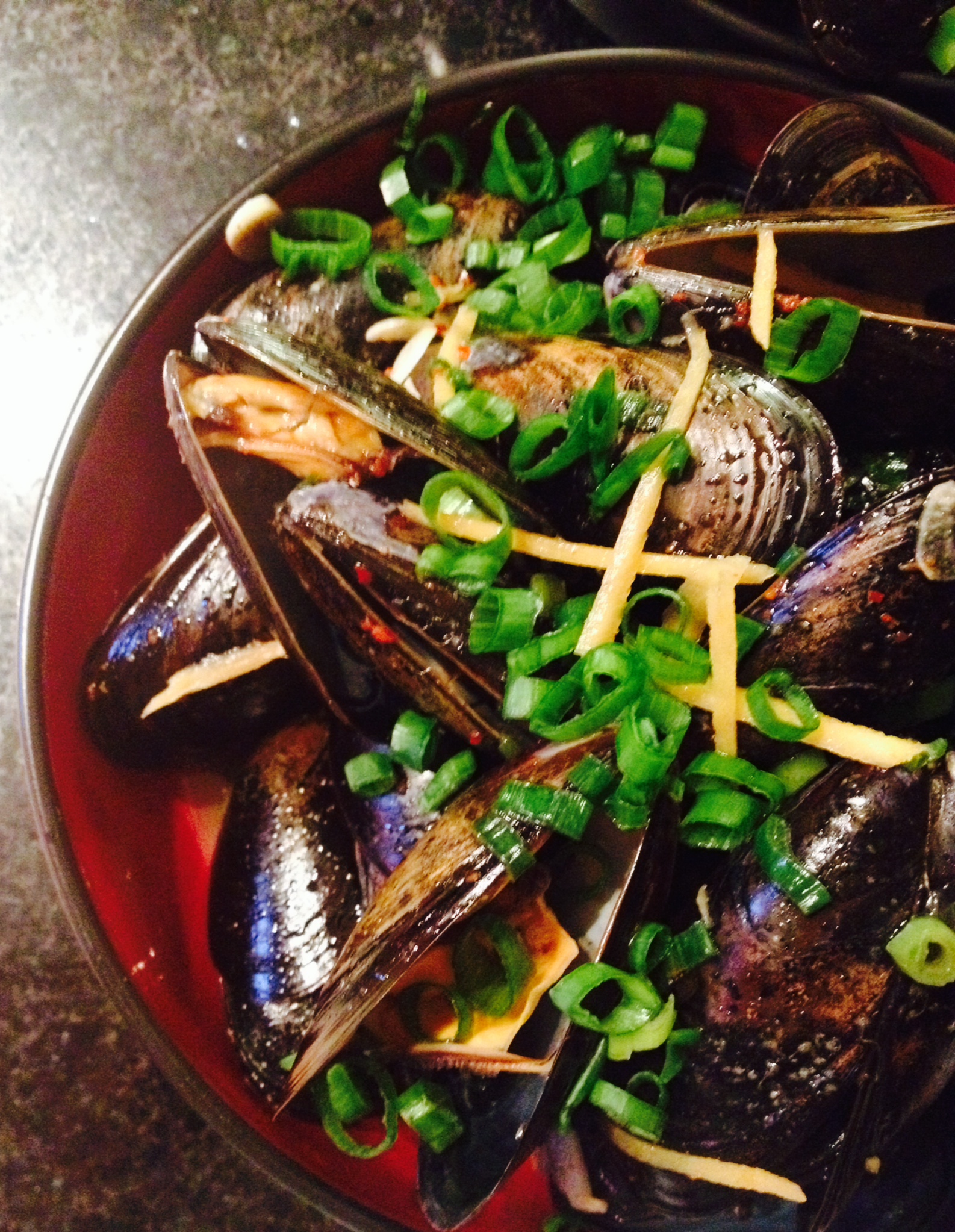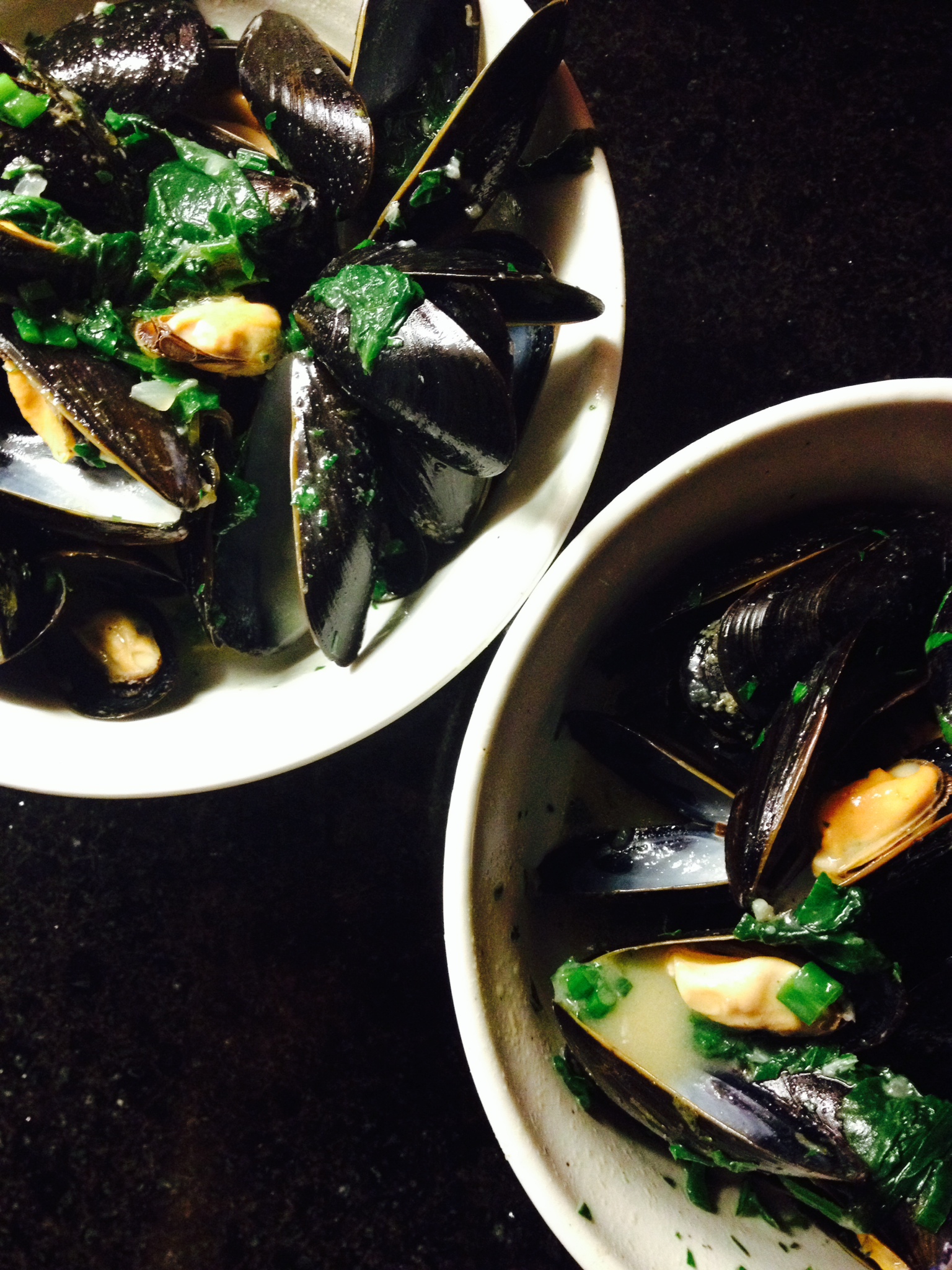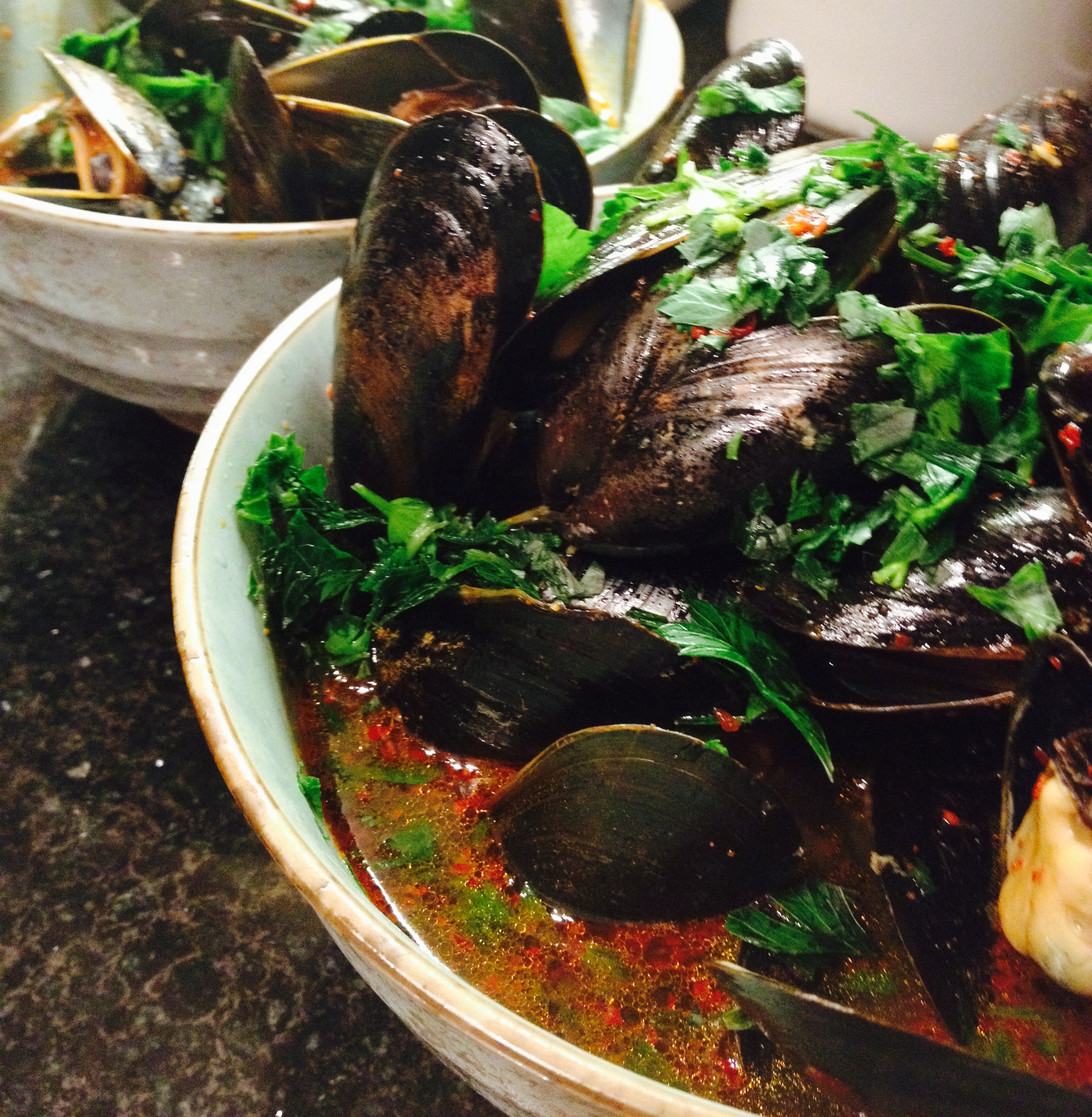Ginger, soy sauce, and a touch of butter make an irresistible Japanese-influenced East-West broth for these mussels. The original recipe was for clams, but I haven’t quite gotten the hang of cleaning those yet, so I substituted mussels since I know what to do with those (and so will you, read on!). Also, did I mention that mussels are one of the most sustainable types of seafood? Yay for mussels! Continue reading
mussels
thai-style curry coconut mussels with lime and spinach
Love Thai food? Me too! The combination of curry, coconut, and lime used in many Southeast Asian dishes is so addictive. Thanks to Thai curry paste, which is readily available (I got mine from Whole Foods), you can recreate the flavors at home without too much fuss. And one of the wonderful things about steaming mussels is that a delicious broth is created once the mussels open up and add their juices to the broth base. I like to serve this dish with jasmine rice because once you have finished the mussels, you can stir rice into the broth (which also has greens in it), and eat it like a soup. And you’ll want to. It’s so good! Continue reading
korean-style mussels in spicy broth
Mussels are one of the most sustainable seafoods and are very quick and easy to make with a little advance planning. The trick is cleaning them, but that has gotten much easier in recent years due to farming methods in which the mussels live in net bags instead of down in the sand, so they don’t get as sandy. And they are very fast to make because they just need a 5-minute steam to open them up. Here is a fun and spicy broth – be sure to have some bread or rice on hand to dip in after you’ve finished the mussels!
A word about the Korean condiments used here… you can buy them at Korean or Asian markets such as H-Mart. The red chile powder is called gochu galu and it does taste different from cayenne pepper in that it has more of a roasted red pepper flavor and you need to use more than you would cayenne. The hot pepper and bean paste is called sunchang gochujang and is Korean spicy miso. If you’re familiar with Japanese miso it is similar, but spicy. It adds a nice savory complexity to your dish. You can scale these ingredients up and down to your own taste – I use about half what it says in the original recipe because I’m a bit of a wimp with hot stuff. 🙂 Continue reading


